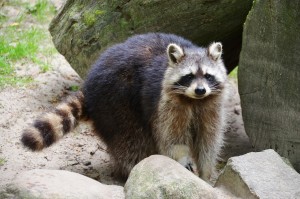

While the regional population is especially dense in southern Finland, the species is also able to live in Lapland. In Finland, the first raccoon dogs arrived as early as the 1930s. The longest migration observed using a GPS collar occurred in early 2016 when a raccoon dog made a 600-kilometre journey. From there, the species has spread to the continent, gaining ground thanks to its capacity to travel long distances. The raccoon dog ( Nyctereutes procyonoides) is a species indigenous to South-East Asia that was introduced as a fur animal in areas of the Soviet Union close to Europe from the 1920s onwards. The datasets provided a unique opportunity to assess, among other things, the role of alien predators in the decline of waterbird populations, since the data from 1951-1970 depicted a period of time when the raccoon dog and the American mink were few in number in Finnish nature. This came out as we studied long-term changes in aquatic birdlife between the periods 15 using datasets collected in the Häme region by Pentti Linkola, the late fisherman," says Hannu Pöysä, a principal scientist at the Natural Resources Institute Finland. "The decline of many waterbird nesting populations, especially in eutrophic lakes, matches temporally the increasing abundance of raccoon dogs and American minks. However, the results of the artificial nest experiments help to understand the reasons for declining waterbird populations. In addition to alien predators, the decline of waterbird populations is caused by several factors, of which many are related to excessive eutrophication. Several reasons for the decline of waterbird populations "What the results do show, however, is that the raccoon dog is a more common nest predator than native mammalian species, and that it is abundant in a range of duck nesting environments," Holopainen explains. In addition, raccoon dogs were found to be an adaptive part of the predator community, as it was either the only species or a part of a community, rich in species that visited nests during the week-long observation period.Īccording to the researchers, the artificial nest experiments cannot directly prove that the raccoon dog has an effect on duck populations. The species was commonly observed on shorelines and shore forests, and it was flexible also with regard to agricultural and urban landscapes, whereas the presence of individual native mammal predators was restricted by habitat type.

In terms of utilising their environment, the raccoon dog was found in many ways to be more versatile than native species. The raccoon dog is a genuine habitat generalist In other words, the effect of a diverse predator community can exceed the sum of its species," Holopainen says. Eggs broken by corvids offer a clue to mammalian predators, which, in turn, are a threat to both eggs and female ducks. "Our research shows that predators cohabiting the same area can benefit from one another. American minks and raccoon dogs often visited nests previously predated by others. On occasion, they would break an egg in the nest, which would attract mammalian predators to the spot. Corvids were often the first to notice the nests. Wildlife cameras revealed that many nests were visited by more than one predator. As expected, raccoon dogs destroyed nests on shorelines, but surprisingly often also in forests close to wetlands," says Postdoctoral Researcher Sari Holopainen from the Finnish Museum of Natural History Luomus, University of Helsinki.

"The raccoon dog was the most common mammalian predator in all of the environments studied in Finland. In Finland, raccoon dogs ( Nyctereutes procyonoides) were more common nest predators than red foxes, although in Denmark the situation was reversed, possibly reflecting the species local relative abundance. The nests were built in natural duck nesting environments. More than 400 artificial nests containing farmed mallard eggs were created, of which roughly 290 were located around southern Finland. In experiments carried out over three years by the University of Helsinki, Finland, and Aarhus University, Denmark, wildlife cameras recorded an abundance of images of alien species predating artificial nests established by the researchers in Finland and Denmark. A new study proves the suspicions well-founded.


 0 kommentar(er)
0 kommentar(er)
